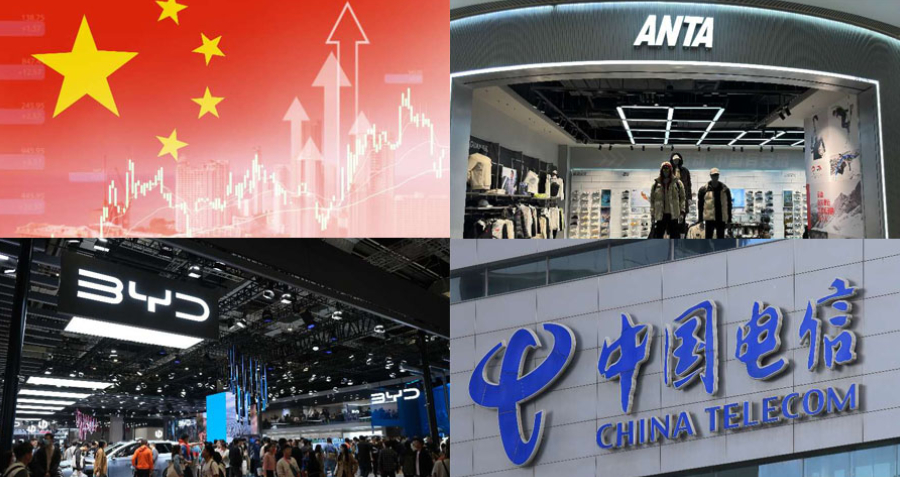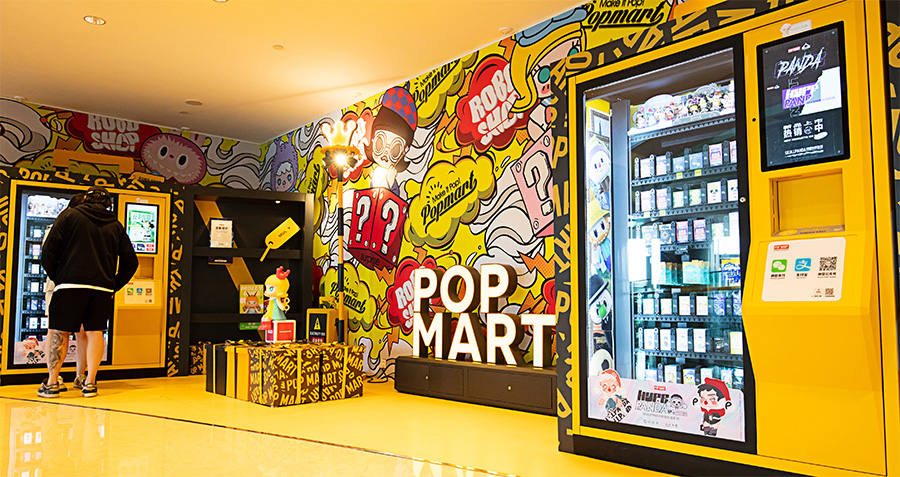The retail industry has a storied history, one which includes a number of large shifts such as the graduation from local neighborhood stores to world-spanning hypermarket chains. The most recent trend in the market is the emergence of the unmanned convenience store, as evidenced by AmazonGo. While they are called unmanned, human labor is still required, but the key difference with regular stores is the lack of a cashier, an approach that hopes to improve the customer shopping experience as well as save on labor costs.
As one of the possible changes in future of the retail industry, companies that follow the unmanned retail outlet trend will not necessarily succeed, but those that ignore the trend entirely will certainly see a decline in business. Therefore, we will take a closer look at the current situation and how unmanned convenience stores are developing.
The Rise of (Un)man
Digitalization is the utilization of data obtained through a company’s operations, processing what is found and then developing business practices based on the results, all with the fundamental aim of reducing costs and increasing efficiency. For a convenience store, this can include updating product positioning within shops based on purchase frequency and even the design of individual shelves. These decisions can be copied across entire store chains.
AmazonGo is at the leading edge of the unmanned convenience store revolution, with the first store being opened to Amazon’s employees in December 2016, and the first public store opened in early 2018.
In order to use the store, customers simply download the AmazonGo app before entering and link it to their existing Amazon account. The app produces a QR code which the customer scans to enter the store. After entering, the process of shopping for goods mirrors that of a regular store, the only difference being that the customer can leave without checking out at the end of their visit. A bill will be generated and sent to the account associated with the scanned QR code and automatically debited from the Amazon account.
To facilitate this, each of AmazonGo’s unmanned stores are fitted with a large number of cameras that detect various customer actions, including which products they pull off the shelves and in what quantity, in order to create an itemized bill. Additionally, they detect other actions such as how long the customer spends in front of which shelves, the quantity of items bought, and so on. Based on this data, AmazonGo can adjust the types of products available and the product layout in real time.
As a method of intelligent store management, it replaces reliance on the experience of the seller with the automated capture of customer information.
AmazonGo’s unmanned convenience stores aren’t entirely unmanned, however, and there are employees at the door to welcome customers and answer queries. There are also others at various places within the stores, making fresh foods and checking IDs for legally-restricted purchases such as alcohol. The key breakthrough lies in the elimination of the cashier, which allows customers to simply “take things and go.”
To date, Amazon has opened 28 AmazonGo stores in cities across the US and the model has inspired retailers in a number of countries, including China, to study and implement the format.
Jane24, founded in China by Lin Jie, is one such company that has tried to explore this new model, but there is still a considerable technology gap between it and Amazon. AmazonGo’s cutting edge technologies can sense customer location through cameras placed on the ceiling alone, and each shelf is equipped with a camera to capture and recognize the products the customer removes. In contrast, Jane24 needs to place cameras on the shelves as well as the ceiling to sense customer location, and the gravity sensors that are used to detect the movement of goods on the shelves were bought cheaply from Taobao—Alibaba’s Amazon equivalent.
The gap in technology also translates into a gap in utility. Fortune magazine has reported that AmazonGo stores can handle around 20 customers at a time, while Jane24 claims to be able to support only 10. But customers with direct experience using the Jane24 store have stated that only three or fewer were let in at any one time.
This also leads to a large sales gap between the two companies. A Jane24 outlet has daily sales of around ¥6,000 result in annual sales of around ¥2.2 million, while each AmazonGo store is expected to generate around ¥10 million ($1.37 million) per year.
Overall, Jane24 simulates the vision of a cutting-edge unmanned convenience store to a certain extent, but due to technological shortcomings, the level of efficiency and accuracy are not up to a true commercialization standard. However, it does remain a useful reference for the development of unmanned convenience stores in China.
But Amazon is a tech company with no previously existing offline retail business, and Jane24 is a startup which created its stores from scratch with no legacy infrastructure holding it back. While it is possible for traditional retailers, which have a large number of existing stores, to start an unmanned convenience store business, remodeling existing locations is a difficult hurdle to cross.
Overcoming resistance
Any change to a business involves a redistribution of benefits. Some people gain and some lose, and countless business evolutions have been aborted because they have failed to address this issue properly. The digitalization of business is a difficult thing to do, but it is also an unstoppable trend and whichever business is one step ahead will benefit greatly. This view is now a consensus within the industry and the key lies in how to effectively implement.
Resistance 1: Company-wide resistance to unmanned convenience stores
There are always difficulties in getting people to accept something new. A lack of understanding of the unmanned convenience store and the changes it brings to the existing vested interests in a company will result in resistance to the new idea. It is important, therefore, to promote greater understanding of the unmanned convenience store and then provide support through the whole process of change.
- Company leaders must be supportive of change
Leaders must consider the significance of the changes and have the determination to implement them. In terms of motivation, employees often believe that once digitalization takes place, a lot of work will be done by machines and the company will employ fewer staff. People facing potential unemployment are unlikely to support such a change. They may also attempt to slow or halt development, perhaps not overtly, but rather through lower-level processes. In response to this, leaders must continue to push forward with digitalization despite whatever resistance is encountered.
- Make it clear to middle and senior management that the change is in their interests
Achieving the full optimization of new processes and fully explaining them to middle and senior management is key to them understanding that the changes can help them reach existing goals. Streamlining purchasing and insulating it from fraud or corruption, for example, will make the lives of middle and senior management significantly easier and help them to reach their KPIs.
- Help low-level staff understand that if they are able to stay, they will earn more
Under the old system, there may have been three staff in any one store sharing $10,000 earned, but with the new system there could now be two staff sharing $9,000. The workload may be greater than before, but compensation will go up. Some of the money saved through digital change can be divided among those who remain, which will promote healthy competition amongst those who stay with the company.
Resistance 2: Company leaders lack understanding of the implications of new technology
The next issue is making sure that company leaders are motivated to stick with changes. The major point here is helping them fully understand what it means to embrace new technologies. Many of today’s leaders are typically in their 50s or 60s and it can be hard to get them to buy into the concept of digital change.
There are three ways that may improve the situation: going to business school; hiring industry professionals as strategic executives to keep leaders informed; and hiring outside experts, such as consulting firms, to help with planning.
Resistance 3: Dealing with existing misconceptions
Pre-existing assumptions about unmanned convenience stores and the lack of awareness inherent in these assumptions can lead to frustration in the development of the system. Properly understanding the difficulties, a company will encounter in the creation of unmanned convenience stores and the potholes to be avoided is a key part of successful digitalization.
One such assumption is that a drop in labor costs will save money, but given the price of the technology replacing them, this may not always be the case. A 2022 report from KPMG China and the CCFA shows that the average annual salary of a worker at a convenience store chain in China in 2021 was ¥51,351, with the average salary in Shanghai being a little higher. This means that if we take the average annual salary as being ¥60,000, and we eliminate two people from the workforce, we would save ¥120,000 per year.
The technology investment for Jane24’s first store was ¥1 million, a cost that will drop somewhat but will remain around ¥600,000, which means that with a saving of two employees’ wages, it would still take around five years to pay off.
For some traditional convenience stores, transformation into an unmanned store will also incur significant expense due to hardware and software costs. The number one ranked convenience store chain in China has around 28,000 stores, and if each store requires multiple cameras, each costing ¥1,000, the total cost could reach well over ¥28 million. The report shows that the top 20% of companies had a net profit margin of 2.84% in 2021, meaning that to cover the cost of the cameras alone, sales must reach around ¥1 billion—not an easy feat.
The labor cost-technology trade off would appear to be more feasible in developed countries where labor costs are significantly higher, and therefore we should expect to see unmanned convenience stores appear earlier in developed, rather than developing countries.
Resistance 4: Negative impact of high investment in technology on company operations
Significant investment is required in order for the technology in stores to be able to properly track consumer actions and preferences, and while Lin Jie spent a huge amount of money on technological development, the final results were still riddled with issues, and this led to the Jane24 project facing a number of difficulties and struggling with commercialization.
The future of digital transformation
- Digitalization and the transformation of vending machines
Given that digital change is the current trend, we may see intelligent vending machines as the next investment hotspot. Currently, the replenishment of traditional vending machines mainly relies on manual labor and human decision-making to place orders and restock machines. Using digitalization, an intelligent vending machine can accurately relay its replenishment needs to staff, meaning that while in the past one person could manage around 20 vending machines, they are now able to work with up to 100.
According to Frost & Sullivan, in 2021, China saw 22.52% year-on-year growth in the number of vending machines across the country. In the face of a large number of players entering the market, it is crucial for enterprises to improve their competitive advantages through the digitalization of their operations and supply chain networks.
- Internationalization is a must for China’s unmanned convenience store enterprises
Labor costs in developed countries are high and therefore so is the potential demand for unmanned convenience stores. In Japan, for example, 35% of retail companies are facing labor shortages and 7-ELEVEN, the country’s largest chain, is in the process of gradually cutting business hours due to the decline in the workforce and rising labor costs. They are utilizing robotics in order to fill these labor gaps.
It is entirely possible for China to export relevant technologies and business models to countries like Japan, while continuing to do back-office work in China to further reduce costs. Some companies have already attempted internationalization but there is a lack of substantial progress so far.
- Increase domestic unmanned stores in suitable areas
Unmanned convenience stores lack an environment for large-scale popularization in China, but this does not mean that it is not suitable in all places. They can be considered in places where there is not enough foot traffic to support manned stores but still a reasonable level of demand, such as mountain tops in tourist areas. In addition, the seasonal nature of the tourism industry and changes in traffic flows lend themselves to unmanned stores.
- The future of unmanned convenience stores
Current technologies cannot support a completely unmanned convenience store, and even AmazonGo has been unable to achieve this feat. With this in mind, we must consider what is currently achievable, what has commercial value and what is commercially viable.
Reflecting on the Jane24 project, Lin Jie believes that it is impractical to rely entirely on machines. While people make mistakes, so do machines, and Lin believes that we should adopt a “machine plus labor” approach to operating convenience stores, with machines taking on the lion’s share of the work.
Concluding remarks
There are some successes to be seen in the digitalization of the retail industry, and there are also a number of immature technologies that still remain, but as the cost of digital hardware and software decline, we will see many new developments in the space.
Overall, it is clear that retail enterprises must follow the inevitable forward march of digitalization because even though there are a number of limitations today, the future is very promising.
Shi Weilei, Professor of Managerial Practice at CKGSB, Gu Chongqing, Senior Researcher at the CKGSB Case Center, Lekuan Zhang, Research Assistant for the CKGSB Digital Transformation Project




















